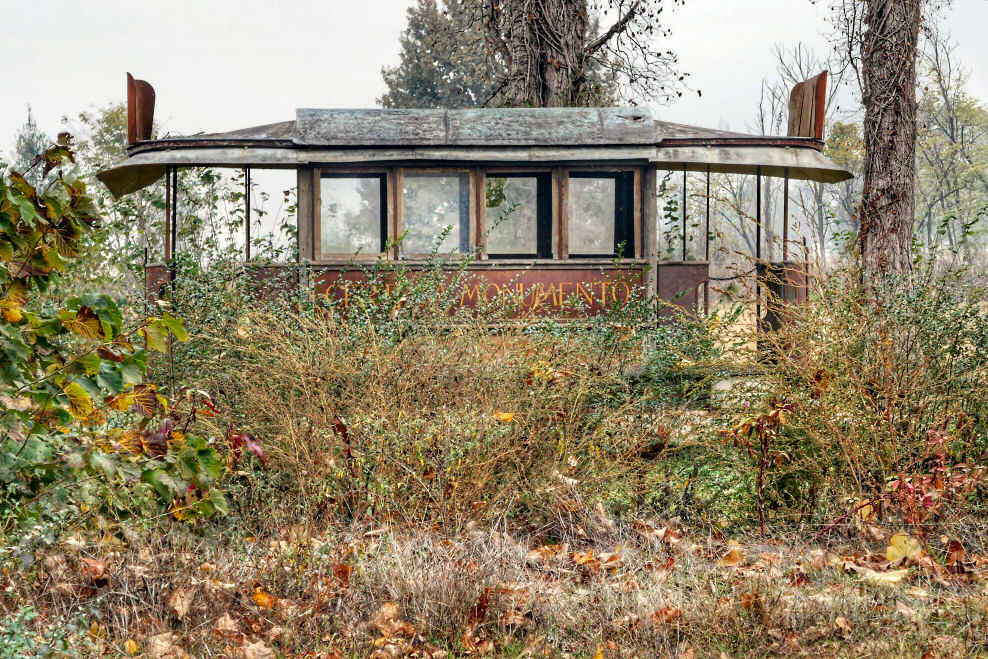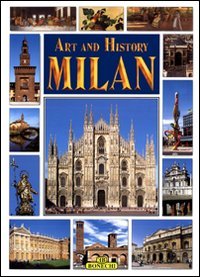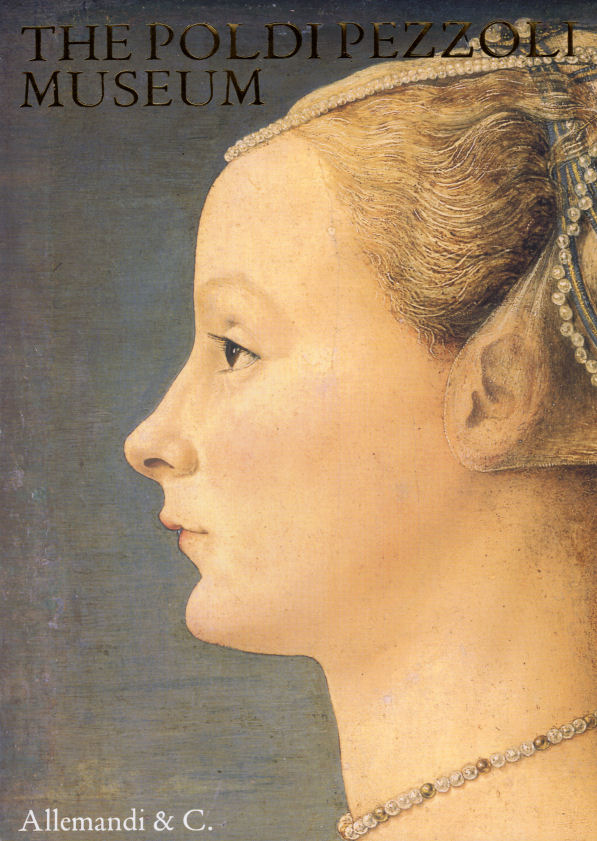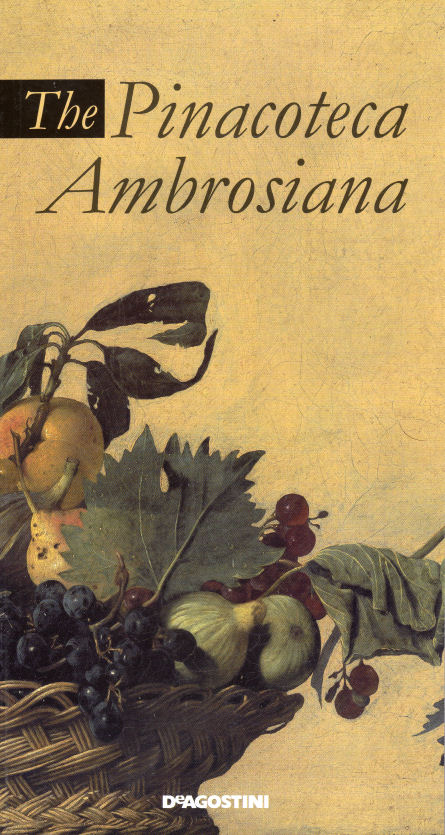|
Thursday 25th October
My first visit to Milan, in
March 2017, had been an
Art Pursuits guided trip exploring Medieval Milan.
This time I'm travelling with new company
Sapienza, but with old-friend tour-guide Clare-Ford-Wille
and Sapienza's head honcho, Charles, acting as tour manager.* The focus is more on the
Renaissance this time -
the trip is called Milan: Treasures of the Visconti and Sforza,
with a morning in the Brera on the itinerary, unlike last time, along with visits
to the Sforza and Visconti castles, and another
visit to see Leonardo's Last Supper - so I get a second look
at it, having never seen it in my life before last year.
As we were booked onto flight BA0576 from Heathrow to Milan Linate
leaving at 9.20 I stayed overnight at the Hilton Garden Hotel as usual. My
room had the blue-tinted monochrome photo-block prints of elderly
aircraft, as usual, with the matching blue view across the bridge from
Tate Modern, as always, over the toilet. The unlovely view of roads and
tedious functional architecture out of the actual window I didn't get to
see in daylight this time, arriving late at night and leaving early.
The
check-in process involved some techno-fuss printing out my boarding pass
but the arrival of Charles helped me to a successful outcome. Bag-dropping and security-scanning
went swift, and the Pret queue for my Americano and almond croissant
seemed to melt miraculously away as I joined it. I like them omens! The
greeting of old chums and the flight and arrival where all without
problems too, and the minibus from Linate to our hotel, the Rosa Grand
again, took hardly any time. Our rooms were not ready, but as lunch had
been cunningly booked in the hotel restaurant - called Sforzia by
Eataly - this was less of a problem. So after, for me, some spaghetti
in a three-tomato sauce, gelato with frutti di bosco and an
espresso, our rooms where ready. The youngish exibitionist couple checking in with
a
bloke swigging from a bottle of Jack Daniels was a bit unnerving, but the
room was fine, if a little lacking in suitcases so far, but the sun was
shining as we made for the Pinacoteca Ambrosiana, through the Piazza del
Duomo full of football fans and carabinieri. The Pin Amb is full of good
stuff, almost all from the 16th and 17th centuries, which Clare did justice to, but I'll have to come back to do more.
There seem to be more copies and 'school-of' works here than average, but
the highlights were the famous Caravaggio still-life (of which there was
sadly no fridge-magnet available), some gorgeous Jan Brueghel
landscapes painted on copper and a truly strange Adoration by Bramantino, with all sorts of figures you don't normally
see, and will have trouble identifying. Raphael's cartoon of The
School of Athens was unfortunately in a room that was being restored,
so was not to be seen this time. The rest of the tour group, coming from
Manchester (and later to become known as the Manchester Four,
unfortunately) joined us towards the end of the visit, and so the old gang
went for a coffee (or hot chocolate) as Clare brought the four up to
speed. Then a quickish visit to San Satiro to marvel at Bramante's
illusionistic apse, just before the 6 o'clock service started, before
returning to the hotel to find our cases delivered, unpack and have a bit
of a rest. Our first evening meal was in the restaurant on the very top
floor of the Rinascente department store, with terrace views of the side
of the Duomo. The veggie options were, like the meaty menu, imaginative,
but did include salmon in the aperitifs and 'sweet water eggs' in the
primo, which turned out to be some sort of roe.
Friday
26th October
The Rosa Grand breakfast rooms are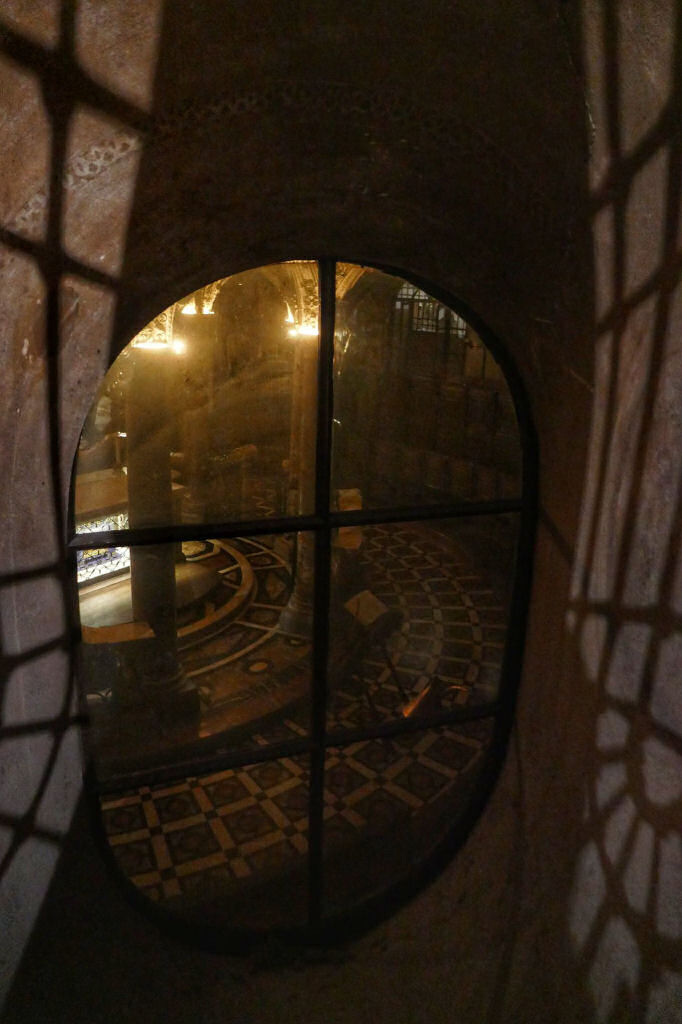 still a weird
maze, with the juice, coffee, muesli, wholemeal croissants and pastries
miles apart on separate tables, often in different rooms, but all of them
superior. A visit to the Duomo began our morning. The body-scanning and
bag searching before entry resulted in the confiscation of my teeny new
Swiss Army knife, with no procedure for me ever getting it back. Nice.
Anyway, inside the architecture, the stained glass, some tombs and the
gruesome statue of Saint Bartholomew Flayed, by Marco d'Agrate,
which depicts the saint with his flayed skin thrown over his shoulder, all
got admired. We also learned that in the days either side of the date of
Carlo Borromeo's birthday, large canvases, called the Quadroni, are
hung between the columns of the nave (see above right). His relics
are to be found in the crypt here (see right). We then found out that when Charles bought our tickets for
the Duomo Museum yesterday, timed for 11 o'clock entry, they had neglected
to inform him that it would actually be closed at that time. A few of us
instead braved the lift up to the roof and were reward with some fine
close up views of crockets, finials, spires and flying buttresses. still a weird
maze, with the juice, coffee, muesli, wholemeal croissants and pastries
miles apart on separate tables, often in different rooms, but all of them
superior. A visit to the Duomo began our morning. The body-scanning and
bag searching before entry resulted in the confiscation of my teeny new
Swiss Army knife, with no procedure for me ever getting it back. Nice.
Anyway, inside the architecture, the stained glass, some tombs and the
gruesome statue of Saint Bartholomew Flayed, by Marco d'Agrate,
which depicts the saint with his flayed skin thrown over his shoulder, all
got admired. We also learned that in the days either side of the date of
Carlo Borromeo's birthday, large canvases, called the Quadroni, are
hung between the columns of the nave (see above right). His relics
are to be found in the crypt here (see right). We then found out that when Charles bought our tickets for
the Duomo Museum yesterday, timed for 11 o'clock entry, they had neglected
to inform him that it would actually be closed at that time. A few of us
instead braved the lift up to the roof and were reward with some fine
close up views of crockets, finials, spires and flying buttresses.
After some reviving coffee we had a, literal, surprise visit to the
Museo Poldi Pezzoli, to make up for our lack of a visit to the Duomo
Museum. As this was the gallery I was most hotly looking forward to
visiting on a future trip, I was most pleased. And even aside from the
draws amongst the artworks, the palazzo itself is a lovely place.
Comparisons to the Wallace collection in London are very appropriate,
especially as
there's a renowned armour collection here too, like in the Wallace.
After a non-group lunch we met up and made for the Castello Sforzesco.
Admiring Romanesque sculpture, the equestrian tomb and some fresco frags
first. Michelangelo's very unfinished Rondanini Pieta is now in
it's own (attractive) space, so we trekked over there, sat and soaked and
then trekked back to the main Pinacoteca, stopping off for a beverage
break, and my second good, dark and thick hot chocolate. We then slipped
into the back entrance to the Pinacoteca, so we wouldn't waste valuable
(pre-closing-) time covering old ground, thereby causing much conflict
between the senior staff member who'd said we could, and his inflexible
colleagues. So, eventually, we got to look at Andrea Mantegna's wonderful
Trivulzio Altarpiece, the surprise super and superior Giovanni
Bellini Madonna & Child opposite (which had also been in the Trivulzio
Collection, the basis of the Castello's collection), and a lovely little Madonna &
Child by local lad Vincenzo Foppa. In amongst all this to-ing and fro-ing in the Castello
were regular spottings of the goodly number of feral cats living in the
internal moat, mostly lounging around a pile of stone cannon
balls. The evening was free and, after a long and full day, I took the
opportunity for some recharging alone-time. And a bath, which bordered on
a luxuriate.

Saturday 27th October
After breakfast and in considerable
rain, we were mini-bused to the Certosa of Pavia, built
for Gian Galeazzo Visconti. (A Certosa, or Charterhouse, is the name given
specifically to Carthusian monasteries.) Inside we admired the architecture, two tombs,
one in each transept, and the unusual intarsia portraits on the stalls in
the choir. The characteristic Carthusian cloisters featured the monks'
individual two-storey quarters, which they rarely left, each with a
vegetable garden. The
resulting vista was part enormous cloister, part suburban terrace (see
right). characteristic Carthusian cloisters featured the monks'
individual two-storey quarters, which they rarely left, each with a
vegetable garden. The
resulting vista was part enormous cloister, part suburban terrace (see
right).
After an excellent lunch in the town of Pavia we
visited the Castello of Pavia, otherwise known as the Visconti Castle, in the
still-pouring rain. Architecturally interesting in a castley kind of way,
with some good terracotta detailing, this is mainly a gallery experience,
with works of very varying quality, and a lot of copies. But there are real gems by Giovanni
Bellini, Vicenzo Foppa, Paolo Veronese and Alvise Vivarini. Returning to
Milan in our minibus in the continuing downpouring, we had the day's last damp
visit, to see Leonardo’s Last Supper fresco, which you might have
heard of, in the refectory of Santa Maria della Grazie. I'd seen it last
time, was not disappointed then, and neither was I today. Magic.
Sunday 28th October
Our last visit of the tour was to the Brera. Famous highlights included
Raphael’s Marriage of the Virgin, Mantegna’s Dead Christ, Piero’s
Virgin with Child with Saints, Federico da Montefeltro and the Dangling Egg, and Venetian gems by Veronese, Tintoretto and Carpaccio,
mostly the fruits of Napoleon's looting, because he was keen to make Milan
the capital of his Kingdom of Italy to smack down Venice. Quieter joys where the many fine works
by local boys, and emerging trip faves, Foppa and Luini. But we didn't see
Caravaggio's Supper at Emmaus as it was away in Paris at an
exhibition in the Jacquemart-André. There were farewell
hugs with the four heading to the airport to catch an earlier flight to
Manchester, in
the gallery in front of Francesco Hayez's famous Kiss (Il bacio -
the blue of the woman's dress, and indeed the painting itself, being later
adopted for the chocolate's box). A little later we
returned - in no rain! - to the hotel to catch our minibus to the airport.
All went well, with moderate queues, and BA0563 due to leave at
3.35, was only about 20 minutes late. A bit of accidental and purposeful
seat-swapping made for some minor mayhem before takeoff, sorted by the
flight attendant. I ended up sitting next to Charles, and found him an
open, witty and positive source of perceptions about the planning and
running of tours*. Getting back and out onto
my home soil was a little delayed, but I was met by Jane and whisked out
onto the tube and into winter, having left (only four days ago) when it
was still autumn. Ho-hum.

*Update But only a few days later I learned
that Charles had decided to chuck it all in, so my first trip with
Sapienza was also the last, ever. Very sad, and disappointing.

|
|

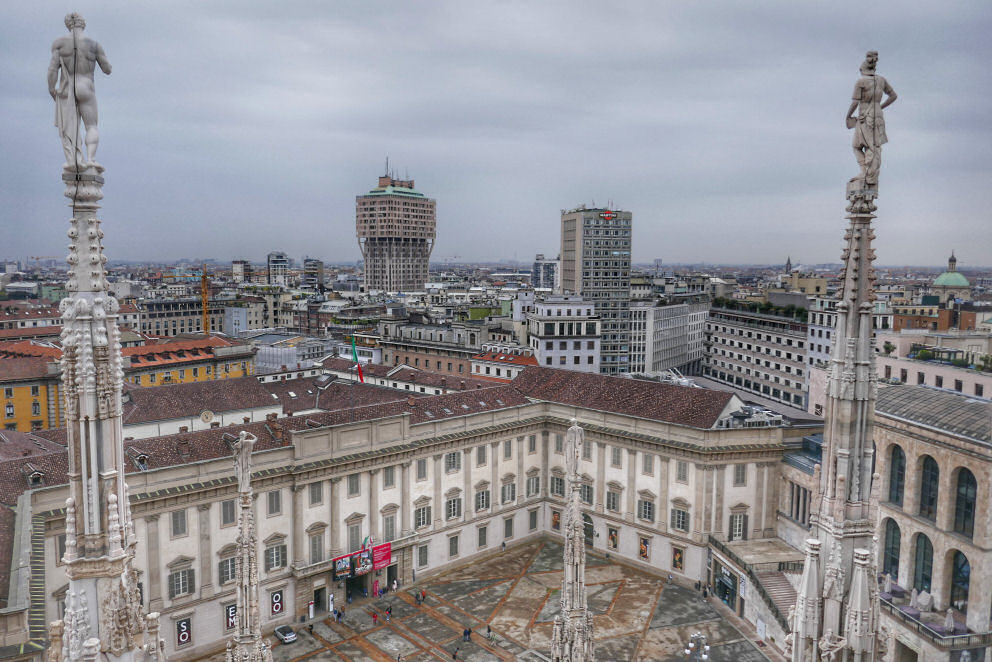
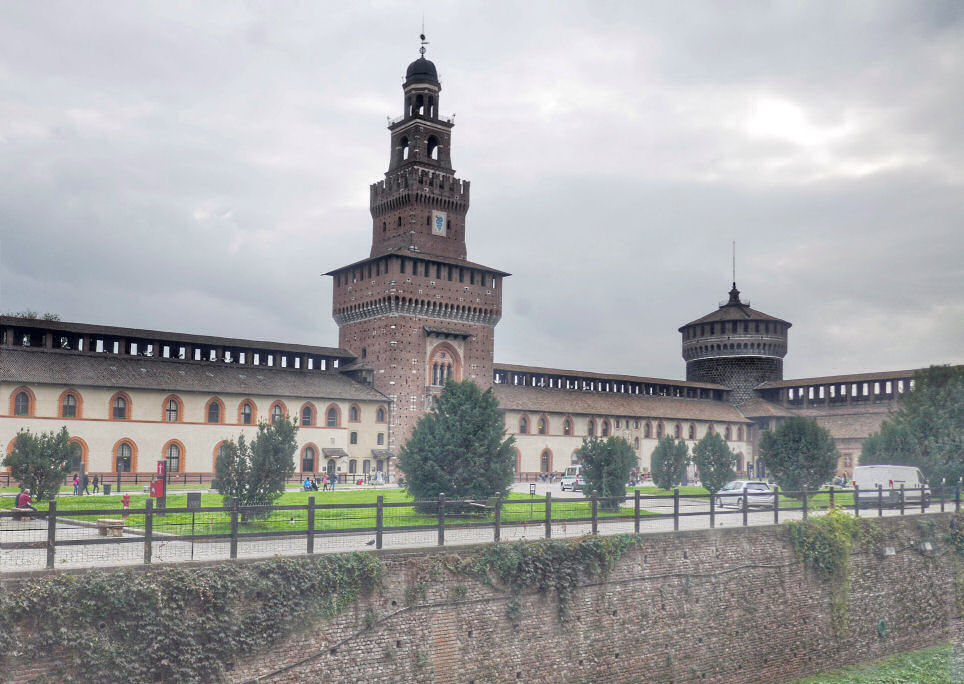
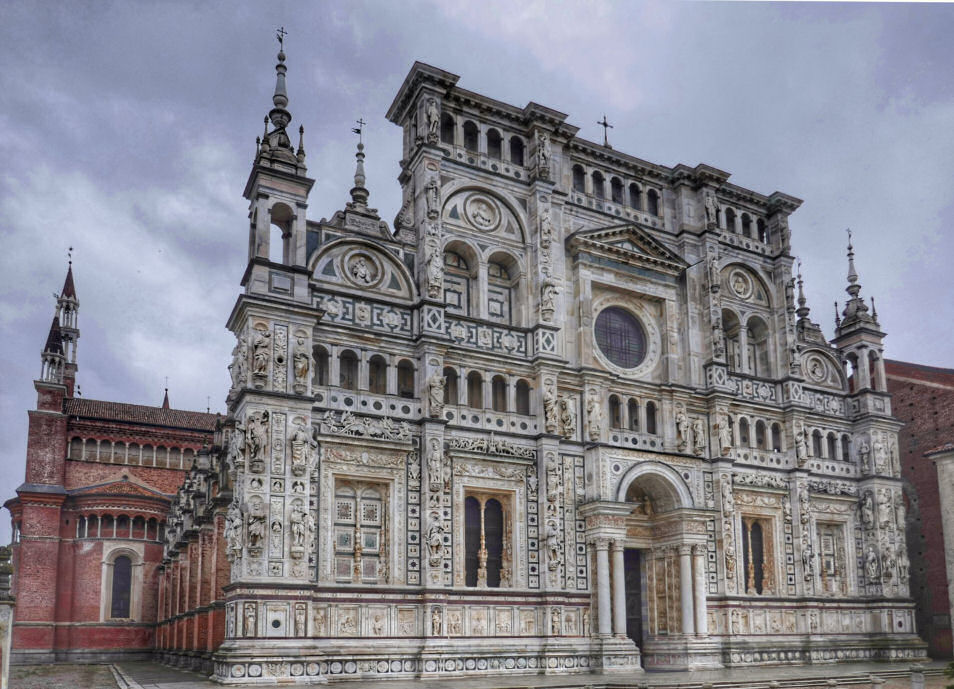

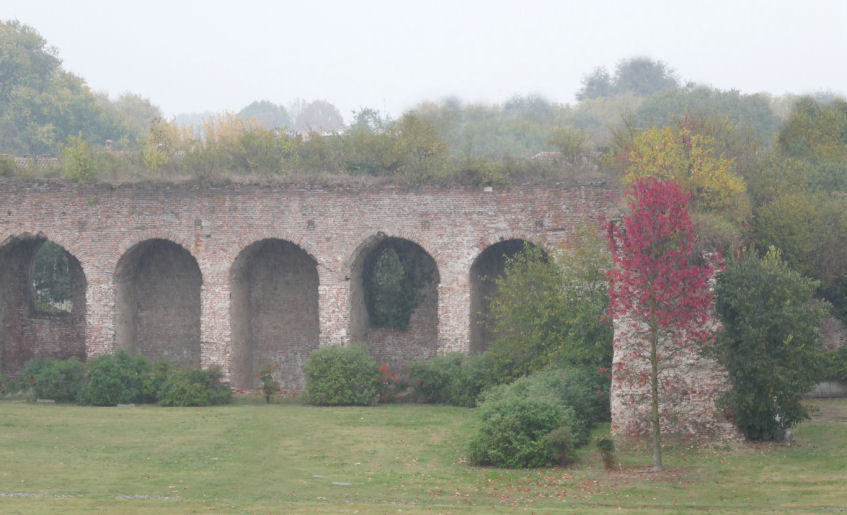
|
